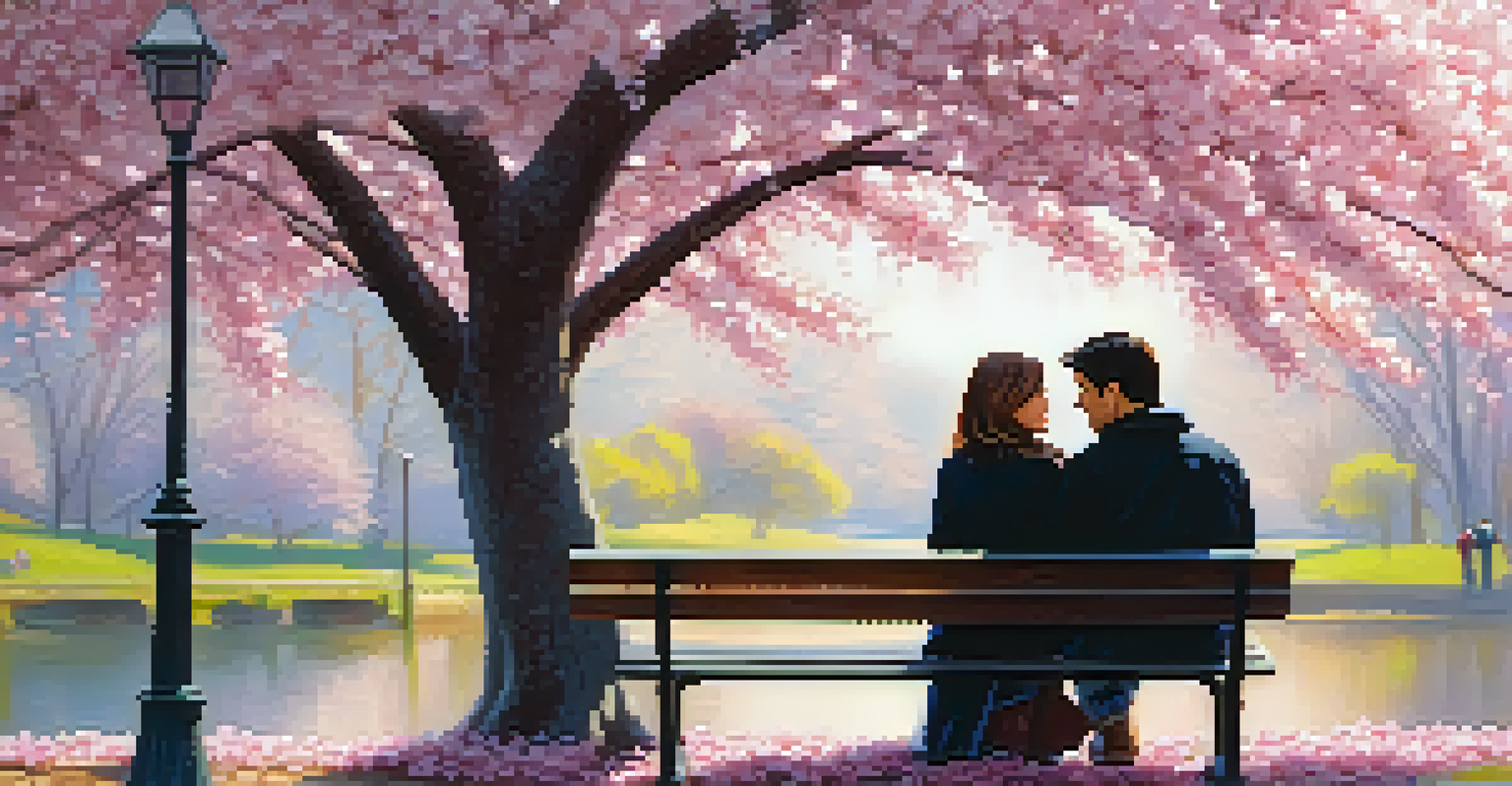Silence in Film: The Impact of Absence of Sound

Understanding Silence: A Key Element in Film
Silence in film is often overlooked, but it plays a pivotal role in storytelling. It’s not just the absence of sound; it’s a deliberate choice that can evoke powerful emotions. Think of a tense moment in a thriller where all sound fades, leaving only the heartbeat of the characters. This absence can amplify anxiety, drawing viewers deeper into the narrative.
Silence is a source of great strength.
In many ways, silence acts as a blank canvas for the audience’s imagination. It creates space for reflection and interpretation, allowing viewers to fill in the gaps with their thoughts and feelings. For instance, in a drama, a long pause can signify contemplation or inner conflict, prompting the audience to engage more actively with the characters’ experiences.
Furthermore, silence can be a stark contrast to the chaos of sound, making its presence even more impactful. When a film employs a sudden shift from noise to silence, it highlights emotional gravity and can leave a lasting impression. This interplay between sound and silence is crucial for creating a dynamic viewing experience.
Historical Context: Silence in Early Cinema
To appreciate the role of silence, we can look back at the early days of cinema. Silent films relied heavily on visual storytelling, using facial expressions and body language to convey meaning. The lack of synchronized sound forced filmmakers to communicate emotions through imagery alone, making the few moments of silence all the more significant.

Movies like 'The Birth of a Nation' and 'Nosferatu' exemplify how silence was used to heighten tension and drama. The absence of dialogue allowed audiences to focus on other elements, such as lighting and composition, which shaped their understanding of the story. It’s fascinating to realize how much can be said without uttering a single word.
Silence Enhances Emotional Impact
Strategic use of silence in films amplifies emotions, allowing audiences to engage deeply with the narrative.
As technology evolved, the introduction of sound in film transformed storytelling techniques, yet silence remained a powerful tool. Filmmakers learned to use silence intentionally, crafting moments that would resonate deeply with audiences. This historical evolution underscores the ongoing importance of silence in film.
Silence as a Character: Creating Atmosphere
Silence can almost act as a character within a film, shaping the atmosphere and mood. For instance, in 'A Quiet Place,' the characters must navigate a world where sound can mean life or death. Here, silence isn’t just a choice; it’s a crucial element of survival that adds layers of tension and urgency to the story.
In the silence, we hear the truth.
In other films, silence can create a haunting atmosphere. Consider the eerie stillness in horror movies like 'The Witch.' The absence of sound amplifies feelings of dread and anticipation, making viewers acutely aware of every creak and whisper. In this way, silence enhances the emotional weight of the narrative, pulling the audience into the characters' fears.
Moreover, this use of silence can lead to introspection. When characters are left alone in quiet moments, audiences are invited to explore their inner thoughts and struggles. This connection deepens the viewer's engagement with the story, making silence an essential part of the cinematic experience.
Silence and Emotion: Evoking Feelings
One of the most profound impacts of silence in film is its ability to evoke emotion. A well-timed pause can speak volumes, allowing viewers to process what they’ve just witnessed. For example, in 'The Godfather,' moments of silence during critical scenes create a sense of gravity that heightens emotional stakes.
This emotional resonance is often heightened by the absence of sound in scenes of loss or grief. In 'Manchester by the Sea,' silence accompanies moments of reflection, providing the audience space to feel the weight of the characters' sorrow. Here, silence becomes a vessel for shared human experience, drawing viewers closer to the narrative.
Cultural Interpretations of Silence
The meaning of silence varies across cultures and genres, influencing how it shapes viewer perceptions in film.
Additionally, silence can serve as a powerful contrast to other sounds, reinforcing emotional turmoil. When a character is overwhelmed by their feelings, the sudden quiet can create a stark juxtaposition that amplifies their inner conflict. This careful orchestration of sound and silence is key to crafting impactful emotional moments.
Cultural Perspectives: Silence Across Genres
The interpretation of silence varies across cultures and genres, adding richness to its use in film. In some cultures, silence may be seen as a sign of respect or contemplation, while in others, it might indicate discomfort or tension. This cultural context shapes how audiences perceive and react to moments of silence in films.
Different genres also explore silence in unique ways. In romantic films, silence can convey intimacy, allowing characters to connect on a deeper level without words. Think of the lingering silence between two characters in a love story; it often speaks louder than dialogue ever could.
Conversely, in action films, silence can heighten suspense before a dramatic moment. The calm before the storm can leave audiences breathless, eagerly awaiting the next explosion of sound. This versatility showcases how silence adapts to and enhances various cinematic experiences.
The Role of Silence in Modern Filmmaking
Today, filmmakers continue to harness the power of silence in innovative ways. With the rise of independent cinema, creators are exploring unconventional narratives where silence plays a central role. This trend reflects a growing appreciation for storytelling that prioritizes nuance and emotional depth over constant dialogue.
Films like 'Hereditary' and 'Moonlight' utilize silence to convey complex themes and emotions. In these films, moments of quiet are not mere pauses but deliberate choices that enrich the narrative. By allowing silence to breathe, filmmakers invite audiences to engage with the story on a more profound level.
Silence as a Narrative Tool
Silence serves as a powerful storytelling element, creating tension and reflection while inviting audience introspection.
Moreover, the advent of streaming platforms has opened doors for diverse storytelling styles where silence can flourish. As viewers become more attuned to the subtleties of film, the expectation for meaningful silence rises, pushing filmmakers to think creatively about how to use sound and silence together.
Conclusion: Embracing Silence in Cinema
In conclusion, silence in film is a powerful narrative tool that shapes storytelling and emotional engagement. By understanding its impact, viewers can appreciate the intricate layers that silence adds to cinematic experiences. It invites us to listen more closely, not just to the sounds that fill the air but to the silence that resonates within.
As we continue to explore and celebrate films, it's essential to recognize moments of silence as significant elements of storytelling. Whether it evokes tension, introspection, or intimacy, silence deserves a place in the spotlight. By embracing silence, we allow ourselves to experience film in all its complexity.

So next time you watch a film, pay attention to the quiet moments. Notice how they shape your understanding and emotional response, and appreciate the artistry behind the absence of sound. After all, in the world of cinema, what isn’t said can often be just as powerful as what is.